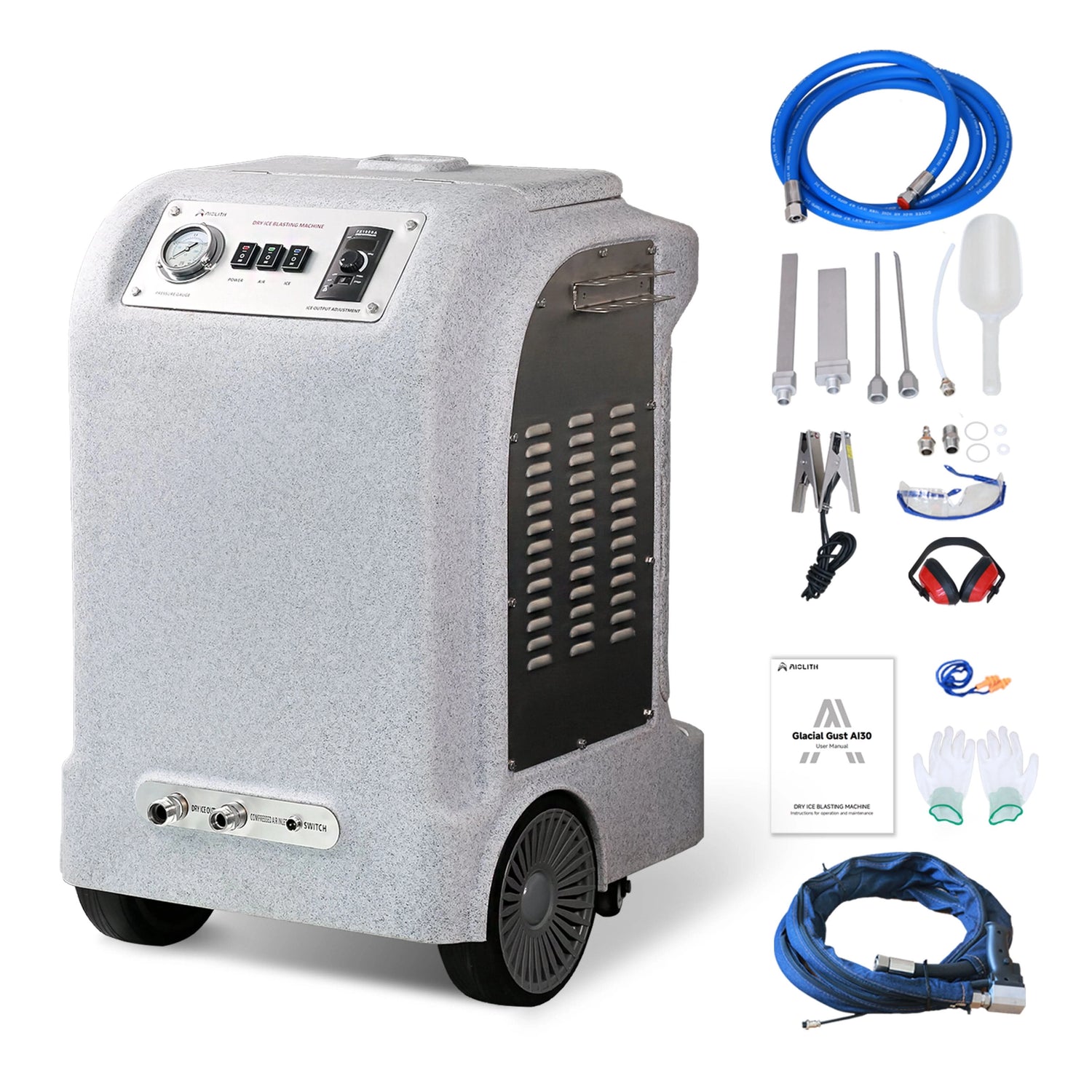7 Critical Problems Sand Blasting Machine Buyers Face Today
Share
Introduction to Modern Sand Blasting Machines
Sand blasting machines come in several forms. Common types include siphon-feed systems, pressure-blast units, and wet sandblasters. Each one works for tasks such as rust removal, metal surface prep, food surface polishing, wood debarking, and paint stripping.
These machines help remove contaminants quickly. However, they often create dust, surface abrasion, and secondary waste. These issues lead many buyers to seek safer and more efficient alternatives.
Real Pain Points Users Experience
Many industries rely on abrasive blasting, yet consistent problems occur. Operators often report high dust levels, uneven finishing, and material damage. Studies by OSHA show that abrasive blasting can release hazardous dust into the air, posing health risks to workers. You can review the safety data here:
https://www.osha.gov/dsg/abrasive-blasting.pdf
Another major challenge is the cleanup. Abrasives like sand or glass beads remain on equipment and floors after blasting. Cleanup increases labor and downtime.
Dry Ice Blasting vs. Sand Blasting Machines
1. Surface Safety
Sand blasting removes contaminants aggressively. This abrasiveness can harm soft or sensitive surfaces, including electronics, rubber molds, and coated materials. Dry ice blasting, however, uses non-abrasive CO₂ pellets. These pellets sublimate on impact and leave no residue.
This makes dry ice ideal for cleaning circuit boards, engines, and machinery without corrosion. Research from Frost & Sullivan shows industries increasingly adopt dry ice cleaning to reduce maintenance damage:
https://www.frost.com/

2. No Secondary Waste
Sand blasting leaves dust and abrasive particles everywhere. Dry ice blasting evaporates instantly, leaving only the removed contamination behind. This reduces cleanup time and improves worker safety.

3. Real User Success
Manufacturers, print shops, and automotive facilities report cleaner results and reduced downtime after switching to dry ice machines. Major industry reviews highlight the benefits of residue-free cleaning for production lines.
One example: https://www.manufacturing.net
Applications Where Dry Ice Blasting Excels
Printing Facilities
Dry ice removes ink buildup on rollers without moisture. It protects machinery and speeds up cleaning time compared to traditional solvents.
Mold Remediation
Home restoration professionals use dry ice blasting to remove mold without chemical residue. It preserves wood structure and eliminates moisture risks.
Rubber and Plastic Molds
Dry ice clears mold buildup without wearing down tooling. This helps factories extend mold life and maintain high-quality output.
Automotive Engine Deep Cleaning
Mechanics use dry ice to clean engines without water. It protects sensors and wiring.
Heavy Equipment Cleaning
Grease and oil removal becomes easier because dry ice penetrates tight areas and lifts contaminants instantly.
Rust and Paint Removal
Although sand blasting is stronger, dry ice works well for lighter rust and paint without harming the underlying metal.
Why the Aiolith AI30 is a Strong Upgrade
The Aiolith AI30 dry ice cleaning machine offers a larger hopper and longer run-time than smaller units. It uses advanced ice-grinding technology and an anti-clogging system for consistent performance.
Aiolith AI30 Key Specifications
| Specification | Value |
|---|---|
| Model | AI30 |
| Voltage / Frequency | 110V / 60Hz |
| Dry Ice Hopper Capacity | 44 lbs |
| Dry Ice Output | 0.66–1.32 lb/min |
| Dry Ice Pellet Diameter | 3 mm and below |
| Air Pressure Requirement | 87–116 psi |
| Air Flow Rate | 71–141 CFM |
| Compressor Requirement | ≥7.5Kw (10 HP) |
| Dimensions | 28 × 24 × 37 in |
| Weight | 135 lbs |
The AI30 works with a compressor matched using this official guide:
https://dry-ice-blasting-machine.com/air-compressor-guide
Why Buying Beats Renting (TCO Insight)
Many buyers start by renting dry ice machines. Over time, repeated rentals cost far more than owning a unit. Use this TCO calculator to compare costs:
https://dry-ice-blasting-machine.com/tco-calculator
This tool helps evaluate long-term ROI and shows how much money businesses save by switching from rentals to ownership.
For full industrial machine guidance, you can explore:
https://dry-ice-blasting-machine.com/
Frequently Asked Questions
1. Is dry ice blasting safer than sand blasting?
Yes. Dry ice blasting creates no dust and reduces operator exposure to harmful particles.
2. Can dry ice replace sand blasting entirely?
It depends. For heavy rust removal, sand blasting is stronger. However, dry ice is better for sensitive or detailed cleaning.
3. Does the Aiolith AI30 require special training?
No. Operators learn quickly, and the system is user-friendly.
4. Do I need a compressor?
Yes. Use the compressor guide above to choose the correct model.
5. Will dry ice damage electronics?
No. Dry ice is dry and non-conductive, so it works safely on circuits.
Sources & References
OSHA Abrasive Blasting Safety: https://www.osha.gov/dsg/abrasive-blasting.pdf
Frost & Sullivan Industrial Cleaning Trends: https://www.frost.com/
Manufacturing Industry Reports: https://www.manufacturing.net

